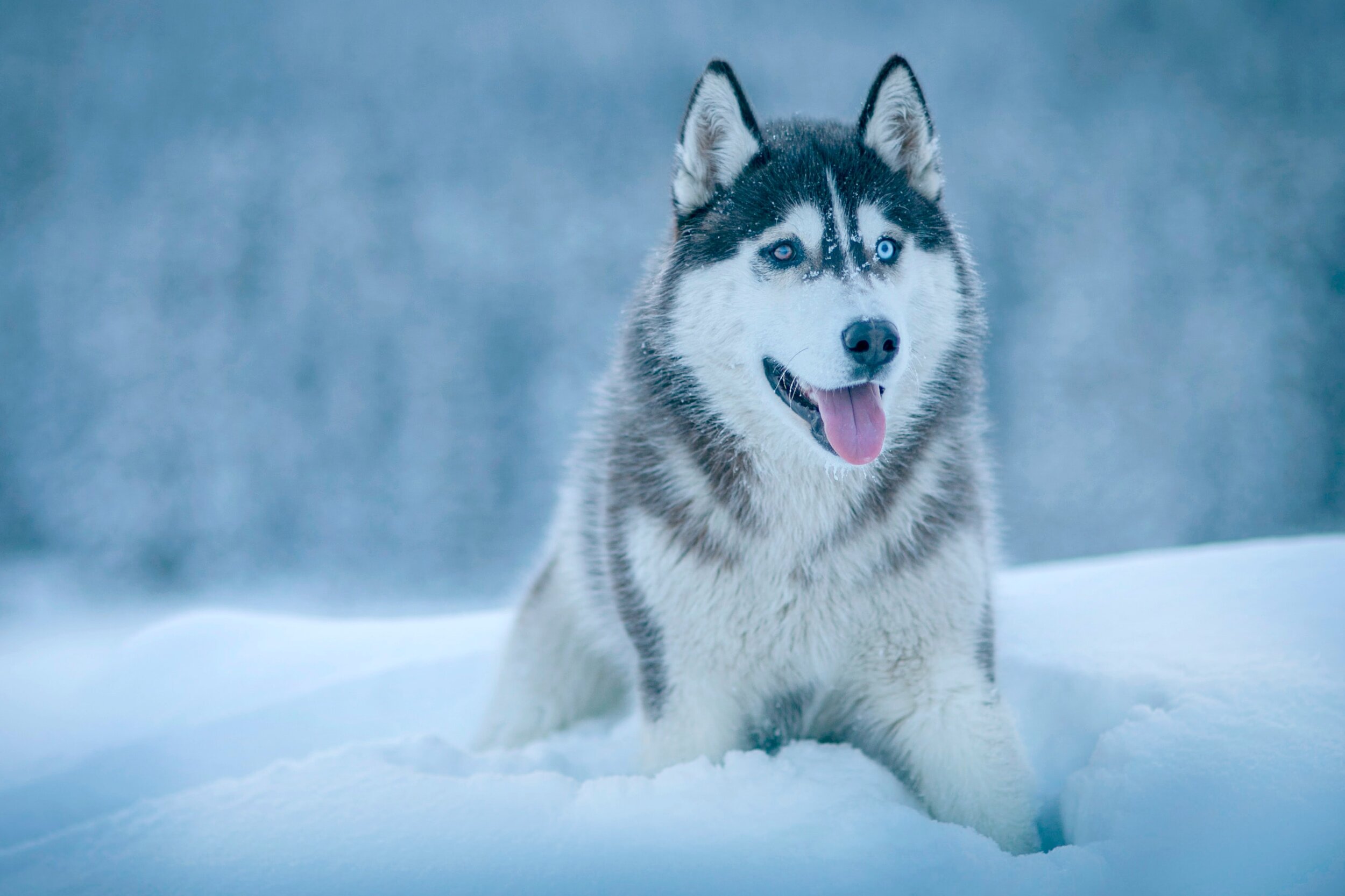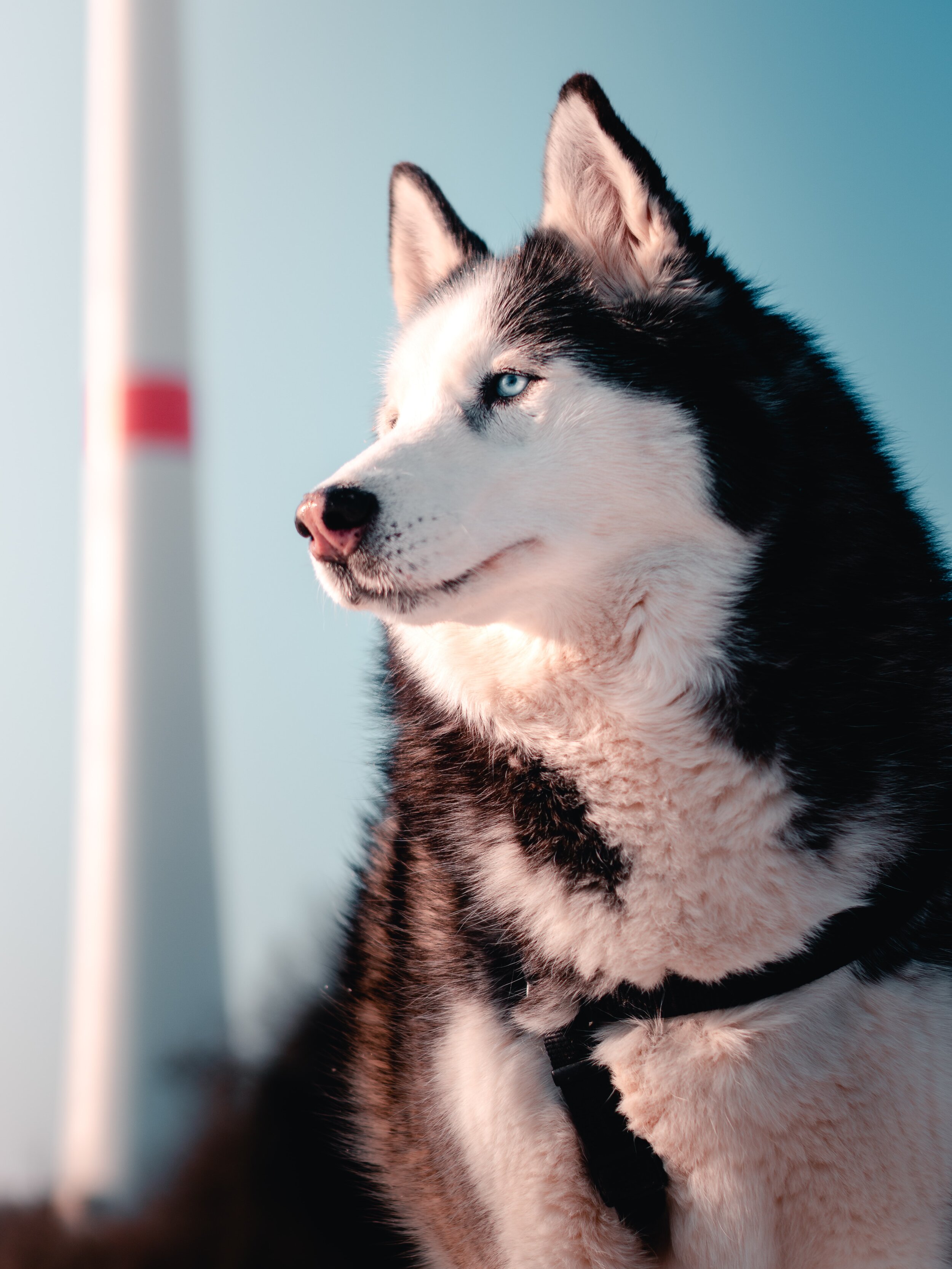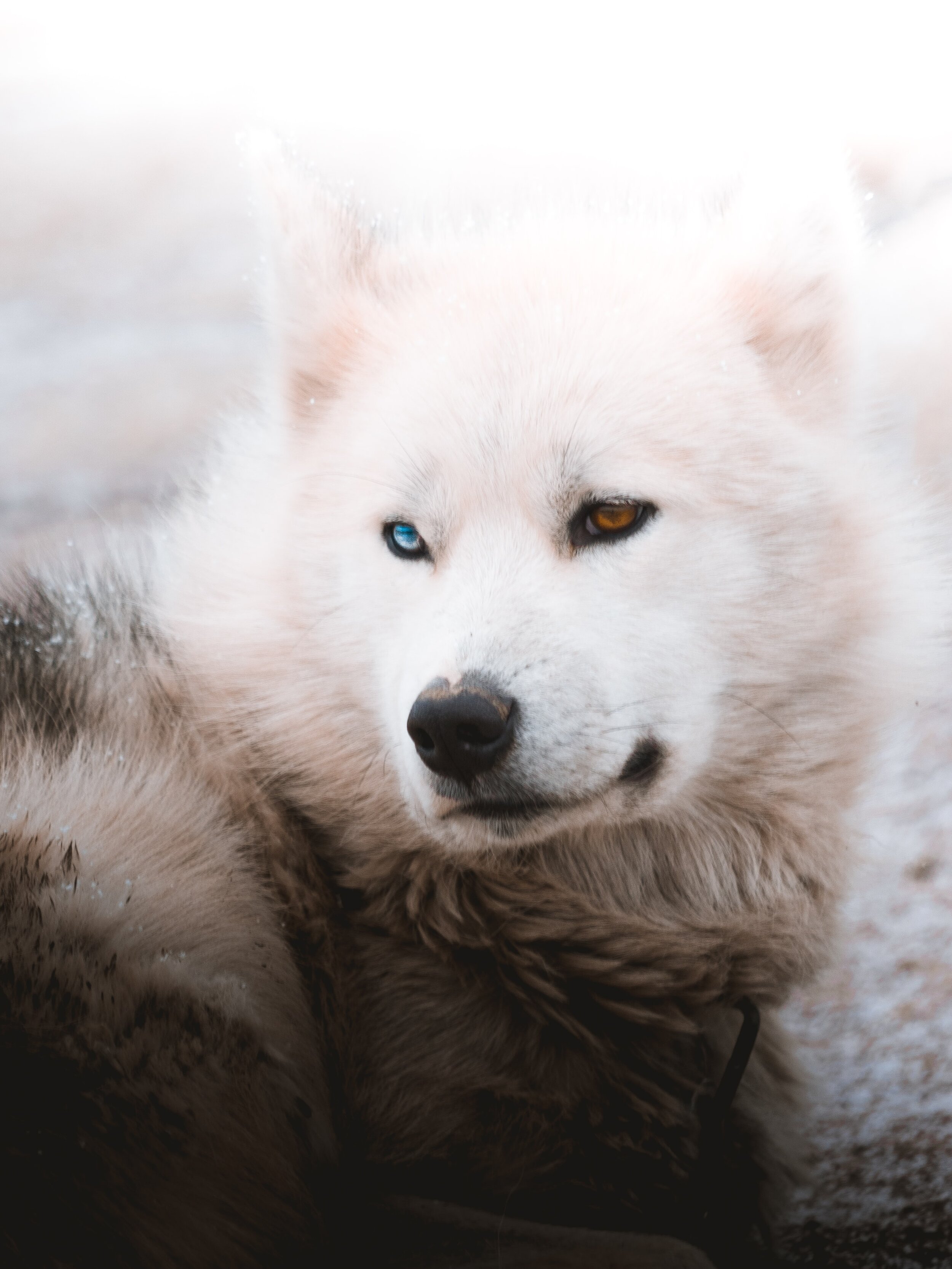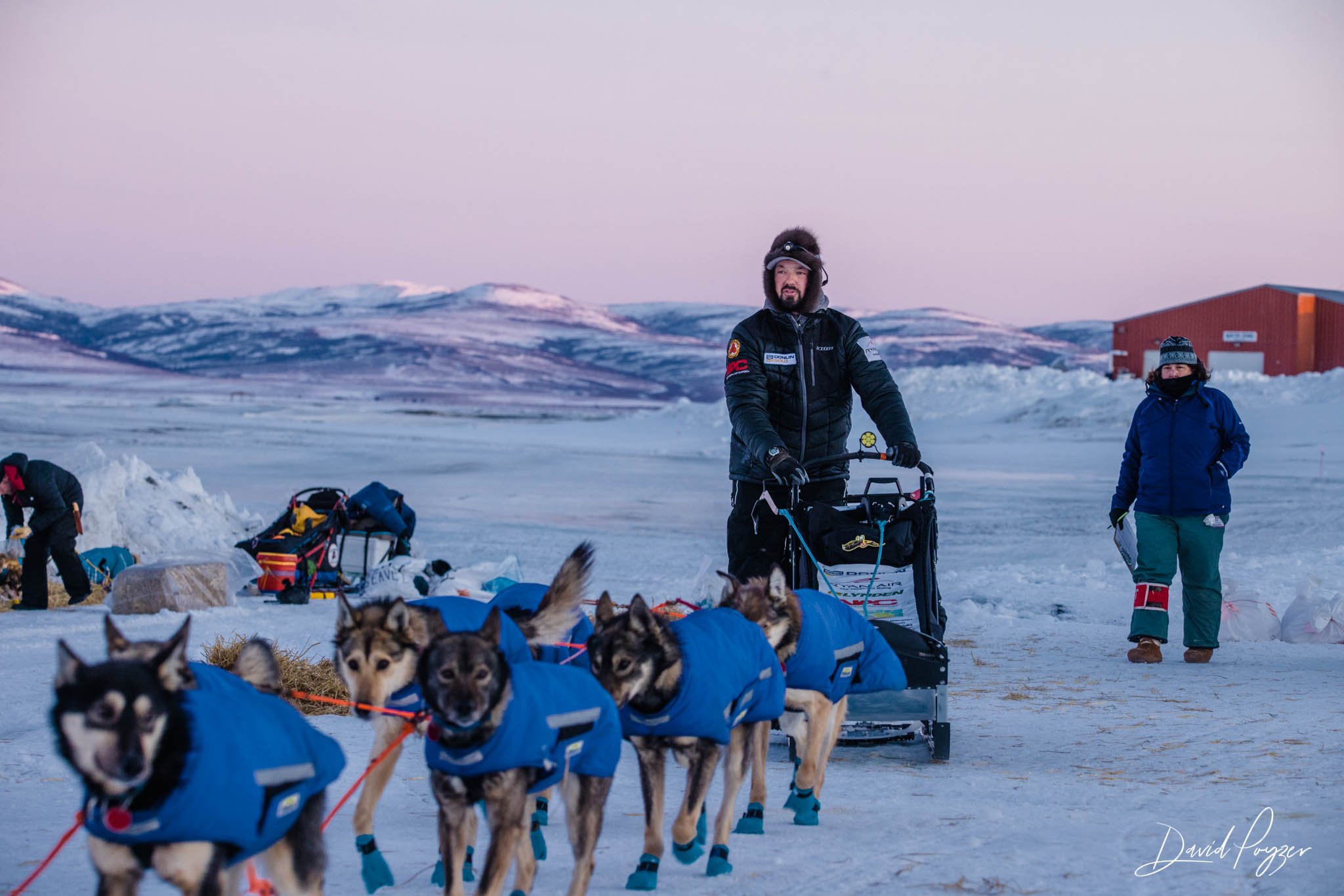Your Guide to Sled Dog Breeds
You might have seen lots of different dog breeds in the context of dog sledding. Malamutes, Huskies, Samoyeds and many more. But what are really the differences between them? Here’s your guide to the breeds most commonly used on the world of mushing.
Alaskan Malamutes are one of the most common sled dog breeds.
How To Choose The Ideal Sled Dog?
Sled dogs were originally chosen based on size, strength and stamina. Nowadays, competitive sled dogs are bred mainly for speed and endurance. Most sled dogs weigh around 25 kg, but they can weigh as little as 16 kg, and as much as 32 kg. One of the most prominent features of sled dogs is their extremely efficient gait. When mushers are building their dog team, they are often looking for a well balanced team of dogs, with similar size and gait to make sure the whole team moves in a similar way for improved efficiency. Sled dogs are able to run up to 45 kph, partly thanks to their tough, webbed feet acting as snowshoes on the trail.
The fur of sled dog varies widely, depending on the breed and use of the dog. Freight dogs should have dense, warm coats to stay warm in cold conditions, while sprint dogs need short coats that let heat out. Most sled dogs have a double coat, with the outer coat keeping snow away from the body, and a waterproof inner coat for insulation. In warm weather, sled dogs typically have problems regulating their body temperature and may overheat. That is the main reason why mushing teams normally don’t do traditional mushing training outdoors during the summer. To keep their extremities warm, dogs have a couple of very useful features. Their tails serve to protect their nose and feet from freezing when the dog is curled up to sleep.They also have a unique arrangement of blood vessels in their legs to help protect against frostbite.
“Sled dogs were originally chosen based on size, strength and stamina. Nowadays, competitive sled dogs are bred mainly for speed and endurance.”
Appetite is a also an important part of choosing sled dogs. Picky dogs off trail are probably even pickier on the trail, which is very undesirable during a long distance mushing race. Sled dogs need to be able to take in high-fat diets to cover their caloric need. Additionally, sled dogs cannot be overly aggressive towards other dogs, as they need to be able to be around lots of other dogs most of the time.
All the aforementioned characteristics are important reasons why the following breeds are the most commonly ones used for dog sledding, both in a recreational and competitive setting.
Alaskan Husky
The most commonly used dog in dog sled racing, the Alaskan Husky, is bred specifically for its performance as a sled dog. The first dogs arrived in the Americas 12,000 years ago, but did not establish in the Arctic until the Paleo-Eskimo people did 4,500 years ago. They typically weigh between 18 and 34 kg and have dense or sleek fur. The Alaskan Husky is not considered a purebred dog, but is a mix of different inuit and polar dogs, hunting dogs, and possibly others. It is a breed very well suited for hard work, and can handle great variations in weather and temperature.
Alaska Husky is a dog breed developed specifically for dog sledding.
Alaskan Malamute
Alaskan Malamutes are large, strong freight-type dogs, very well suited for dog sledding. They weigh between 36 and 54 kg and have round faces with soft features. Alaskan Malamutes are actually told to be one of the first ever domesticated breeds of dogs, and they originate from Alaska. These dogs are known for their broad chests, thick coats, and tough feet. They are highly regarded for their pulling strength, while their speed have little value to mushers. Alaskan Malamutes are mainly used in expeditions and long adventure trips, and for hauling heavy loads. These dogs were actually the dog of choice for hauling and messenger work during World War II.
Alaskan Malamute enjoying winter conditions.
Canadian Eskimo Dog
The Canadian Eskimo Dog, also known as Qimmik, has its origins in the aboriginal sled dogs used by the Thule people of Arctic Canada. The breed as it exists today was originally bred by the Canadian government. It is capable of pulling between 45 and 80 kilograms per dog for distances between 24 and 113 kilometres.The Canadian Eskimo Dog was also used for hunting purposes, helping Inuit hunters to catch seals, muskoxen, and polar bears.
Chinook
The Chinook is a relatively rare breed of sled dogs, developed in New Hampshire in the early 1900s. It is a blend of English Mastiff, Greenland Dog, German Shepherd Dog, and Belgian Shepherd. The Chinook is a well-suited sled dog thanks to its robust body tireless gait. Their coat color is always tawny, ranging from a pale honey color to reddish-gold.
Greenland Dog
Greenland Dog.
Greenland Dogs are eskimo dogs originating from Greenland, with great endurance but limited speed. They are commonly used for recreational dog sled adventures and long expeditions. As of 2016, there were about 15,000 Greenland Dogs living in Greenland, but decades ago the number was significantly higher and projects have been initiated to ensure the survival of the breed. In several regions on Greenland, they are actually the primary mode of transportation during the winter. Most hunters in Greenland prefer dog sled teams over snowmobiles, as the dog sled teams are more reliable.
Samoyed
The Samoyed was developed by the Samoyede people of Siberia, who used their dogs to herd reindeer and hunt, in addition to hauling sleds. These dogs were so important to the Samoyede people, that they were allowed to sleep indoors in the tents together with their owners.
A Samoyed enjoying the beautiful view.
Siberian Husky
The Siberian Husky appears quite similar to the Malamute. Considering its size, it can pull heavier load than the Malamute, but is not as persevering. They weigh between 18 and 27 kg, and have been selectively bred for both for their looks and their ability to pull heavy loads.
Togo, the Seppala Siberian Sled Dog.
Seppala Siberian Sled Dog
This breed is descended from one of the most famous sled dogs, Togo, and named after his musher and breeder, Leonhard Seppala. After Togo’s incredible performance during the Great Serum Run, this breed became sought after in the sled dog line.
“I never had a better dog than Togo. His stamina, loyalty and intelligence could not be improved upon. Togo was the best dog that ever traveled the Alaska trail.”





































